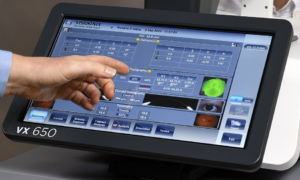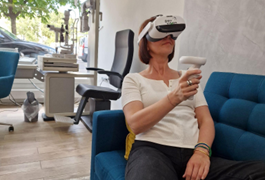 Heidelberg Engineering GmbH, a global ophthalmic imaging company, presented the Heidelberg Engineering Perimeter (HEP) as a functional test adjunct to the SPECTRLIS OCT at the annual 2013 American Academy of Optometry Professional Press Conference in Seattle, Wash.
Heidelberg Engineering GmbH, a global ophthalmic imaging company, presented the Heidelberg Engineering Perimeter (HEP) as a functional test adjunct to the SPECTRLIS OCT at the annual 2013 American Academy of Optometry Professional Press Conference in Seattle, Wash.
HEP provides two-in-one perimetry, which enables clinicians to detect visual field loss at early stage of disease using Flicker-Defined Form perimetry and allows the physician to manage progression of the disease at later stages using Standard Automated Perimetry (SAP). Flicker-Defined Form perimetry is proven to correlate to structural defects detected by SPECTRALIS OCT. Unique white-on-white perimetry with increased stimulus size from 15 dB to 0 dB enables full-range SAP and ensures good test-retest characteristics. The HEP also offers a 30-second screening strategy to balance the demand for a quick visual field assessment with the need for sufficient accuracy in a busy practice.
Additionally, the monitor-based system with full dynamic range perimetry is proven to deliver equivalent results to a projection-type perimeter with a compact design, which allows for ideal space saving. Adaptive Staircase Thresholding Algorithm (ASTA) Follow-Up reduces the test time of follow-up examinations to approximately three minutes by using results of previous tests.
HEP utilizes the Heidelberg Eye Explorer (HEYEX) software platform to combine analysis of structural damage detected by the HRT or SPECTRALIS OCT and visual field defects as detected by the HEP. HEP’s Functional Change Analysis (FCA) applies existing knowledge of the random variability of visual field analyses and flags progressive visual field loss that exceeds the normal level of repeatability. The FCA is the first trend analysis to provide information on significant change in probability maps for Total Deviation, as well as for Pattern Deviation.
Functional Change Analysis uses the Flicker-Defined Form to allow for monitoring of subtle change in early disease and uses SAP for management of long-term follow-up in moderate to advanced glaucoma patients.



























